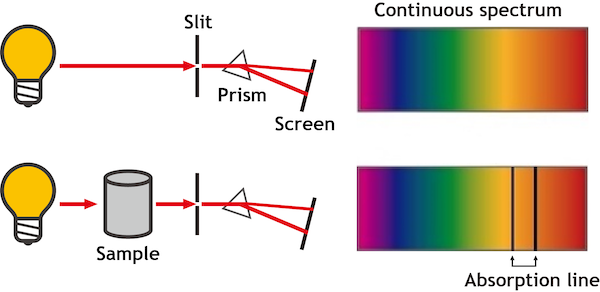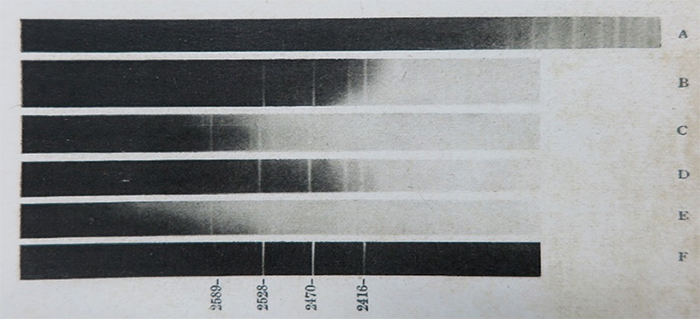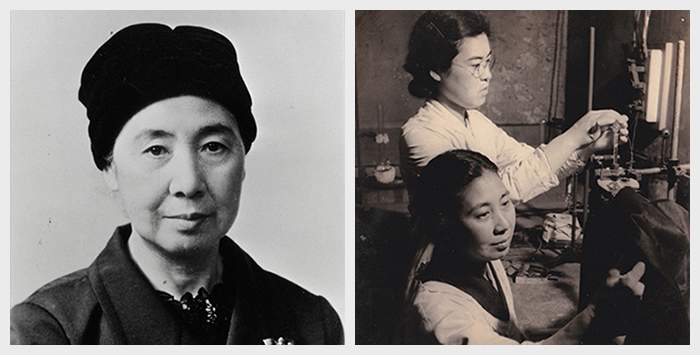First Female Chief Scientist: Sechi Kato
Overview
RIKEN’s Chief Scientist system was established in 1922. Under this system, Chief Scientists were given discretion to lead their own laboratories, allowing researchers to dedicate themselves to topics they personally found important. Whenever researchers gathered, free, lively and thorough discussions took place, without regard to authority, age, or field, often giving rise to new ideas. Physicist Shinichiro Tomonaga described this environment as “a free paradise for scientists.” The first woman to become a Senior Research Scientist in this paradise was Sechi Kato (1893–1989).
Born in Yamagata, Kato studied at Hokkaido University’s Faculty of Agriculture while working as a teacher and joined RIKEN in 1922. Initially assigned to the chemical analysis laboratory, she developed an interest in quantum mechanics and began learning spectroscopy in the physics labs. Discovering that absorption spectra could be applied to chemical analysis, she energetically analyzed various substances, revealing the relationships between absorption spectra, chemical structures, and reactions. Her research gained international recognition, and in 1953, she became the first female Senior Research Scientist. Her work exemplified RIKEN’s strength in fostering interdisciplinary research.
In 2018, the Sechi Kato Program was established at RIKEN to support female researchers. The program aims to cultivate internationally active women scientists with broad perspectives.
Aspiring to Teach Amid Harsh Circumstances
Kato was born in 1893 in Oshikiri Village, Higashitagawa District, Yamagata Prefecture (now Mikawa Town), on the Shonai Plain. Her father’s large-scale dairy farm failed, and her mother and two siblings were victims of the 7.0-magnitude 1894 Shonai Earthquake. Her father remarried a woman named Kin in an attempt to rebuild the family, but he died of illness in 1908. The family lost all their property and was left with significant debt.
To support her family, Kato moved from Tsuruoka Girls’ High School to Yamagata Women’s Normal School and became a local elementary school teacher. At Kin’s urging, she entered the Science Department of Tokyo Women’s Higher Normal School (now Ochanomizu University) in 1914. Kin supported their life in Tokyo by doing sewing work on a treadle sewing machine.
Studying at Hokkaido Imperial University While Teaching
After graduating from Tokyo Women’s Higher Normal School in 1918, Sechi began teaching at Hokusei Girls’ High School in Sapporo, Hokkaido. Feeling her knowledge was insufficient, she applied to Hokkaido Imperial University that same year. When the faculty hesitated to admit a woman, Sechi appealed directly to the university president. As a result, she became the first woman admitted to the Faculty of Agriculture as a non-degree student.
Balancing life as both a student and teacher, Sechi later reflected:
“I was deeply moved by the lectures, and came to understand that scholarship had depth in three dimensions—lively, vibrant, and unceasing.”
She completed all 25 elective subjects in three years. Her thesis was well-received, and she became an assistant in the Department of Agricultural Chemistry, resigning from her teaching position. Soon after, she married Tokusaburo Sato, a fellow native of her hometown. Her husband and stepmother Kin remained her lifelong supporters.
Encountering Absorption Spectra at RIKEN
In 1922, through the introduction of Principal Motoichi Yuhara of Tokyo Women’s Higher Normal School, Sechi became a research student at RIKEN and joined the chemical analysis lab under Isaburo Wada.
Initially researching soil, in work related to her background in agriculture, she developed an interest in quantum mechanics after hearing physicist Koji Fukuda. She began visiting the lab of Toshio Takamine, where she observed spectroscopic experiments and conceived the idea of applying absorption spectra to chemical analysis. Using a spectroscope, she photographed the absorption spectra of various chemicals and began examining the relationship between these spectra and chemical structures.
Sechi gave birth to her first son the same month she entered RIKEN, and to a daughter two years later. In an era when even marriage was difficult for female researchers, RIKEN demonstrated remarkable tolerance.
 What is an absorption spectrum?
When light with a continuous spectrum passes through a sample, specific wavelength regions unique to molecules in the sample are absorbed, creating dark or faded bands in the spectrum. This is the absorption spectrum. Using a spectroscope, one can analyze the type and quantity of molecules in the sample non-destructively.
What is an absorption spectrum?
When light with a continuous spectrum passes through a sample, specific wavelength regions unique to molecules in the sample are absorbed, creating dark or faded bands in the spectrum. This is the absorption spectrum. Using a spectroscope, one can analyze the type and quantity of molecules in the sample non-destructively.
Earning a Doctorate Through Absorption Spectra Research
In 1927, Sechi published a paper titled “The Absorption Spectrum of Neodymium Salt,” after photographing and analyzing its spectra. Her research expanded from inorganic to organic compounds, continuously uncovering relationships between spectra and chemical structure.
In 1931, she began to focus on the polymerization of acetylene into benzene. Based on ultraviolet absorption spectra, she explored benzene synthesis not through high-temperature, high-pressure reactions but via appropriate-wavelength light at room temperature and pressure. This research earned her a doctorate in science—Japan’s third woman to achieve this, after Kono Yasui (botany) and Chika Kuroda (chemistry).
 Absorption spectrum of acetylene
Absorption spectrum of acetylene
RIKEN’s First Female Senior Research Scientist
In 1944 and 1945, during WWII, Sechi participated in penicillin research for pneumonia and other infections, alongside Teijiro Yabuta, Kinichiro Sakaguchi, and Yusuke Sumiki. From 1935–1945, she also conducted research on aviation fuel commissioned by the Japan Society for the Promotion of Science.
After the war, she worked with Kiyoko Yamamoto and Shizu Tonomura on photosynthesis and on streptomycin, an antibiotic for tuberculosis. In 1953, her pioneering work in chemical analysis through absorption spectra was recognized, and she became the first female Chief Scientist at RIKEN.
 Left: Portrait of Sechi Kato | Right: Sechi Kato (front) and Kiyoko Yamamoto
Left: Portrait of Sechi Kato | Right: Sechi Kato (front) and Kiyoko Yamamoto
Supporting High School Science Teachers Through “Science Seminars”
From her retirement in 1960 until 1975, Sechi hosted free “Science Seminars” for active high school teachers of physics, chemistry, and biology.
Excerpt from teacher Masako Sai’s testimonial:
“The seminars were invaluable for discussing education and research. But more than that, Dr. Kato’s deep knowledge, insight, creative ideas, and relentless passion for scholarship were deeply moving. Even immature questions were never dismissed; she engaged with humility, not as a teacher but as a fellow learner. She never judged people by intellect and generously supported those with a true desire to learn… Everyone who joined the seminar said: ‘We learned things that could never be learned in universities or laboratories.’”
In 1959, Oshikiri Village—Sechi’s birthplace—which had been renamed Mikawa Town, honored her as its first honorary citizen. In 1989, Sechi suffered a stroke in her Tokyo study and passed away at the age of 95.
Messages from Sechi Kato
“Do not lament your lack of background or complain about society’s flaws while idly waiting for your chance. If you knock, the back gate will open. If you push your way in, a small desk will be given to you. Be grateful for that, devote yourself wholeheartedly to study, and you will gradually shine.”
“It’s wrong to assume that ordinary people can only see what already exists. Whether in art or science, inspiration never comes from nowhere. When we stay observant and meticulous in our attention, inspiration descends, and discovery is born.”
“A heart deeply drawn to science is like being immersed in a bath of true poetry—peaceful, without resentment or hatred, vanity or arrogance. In silence, one senses movement; in movement, one perceives calm. It is akin to philosophical thought. Thus, science is a window to new worlds for the soul. For women, to wear such insights layer by layer is the finest attire of all.”
The Sechi Kato Program
To further promote women researchers, RIKEN established the Sechi Kato Program in 2018. It is meant to attract outstanding female scientists and provide them with the opportunity to lead research groups independently. The program aims to foster the emergence of women researchers with wide perspectives and the ability to thrive internationally.
